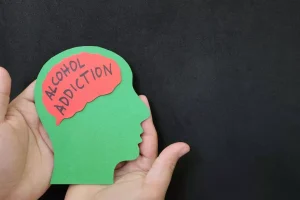
The dynamics of a peer group can be a positive influence and assist in establishing healthy and wholesome behaviors that are age-appropriate and socially accepted. For example, if a group of good friends wants to get good grades, an adolescent may be positively influenced to study. Peers play a large role in the social and emotional development of children and adolescents. Their influence begins at an early age and increases through the teenage years. It is natural, healthy and important for children to have and rely on friends as they grow and mature.
Negative Peer Pressure

In the case of teens, parents are rarely concerned about the peer pressure their kids may face to engage in sports or exercise, as these are typically seen as healthy social behaviors. This is OK, as long as the exercise or sport does not become an unhealthy way of coping, excessive to the point of negatively affecting their health, or dangerous (as in dangerous sports). Coworkers can challenge you to get out of your comfort zone, take on new and exciting projects, and follow your dream career path. Sometimes, it’s about collaboration and support rather than pressure to make poor decisions. Here is an activity you can do to become aware of the different types of peer pressure. Review the following scenarios and ask if each one is an example of direct negative peer pressure, indirect negative peer pressure or positive peer pressure.
social skills examples: How socializing can take you to the top
- Peer pressure, or influence, comes in several forms, and these types of peer pressure can have a tremendous impact on a young person’s behavior.
- Children’s Health offers one of the most comprehensive specialty programs available for children and teens who need psychiatry and psychological services.
- A group dynamic can be a positive peer influence if the behaviors are healthy, age-appropriate and socially acceptable.
- Peer pressure is the influence exerted by the majority on a person, to the point of it being capable of modifying their thoughts, feelings, and behaviors.
- Older teens and young adults may be peer pressured to engage in harmful activities like drinking alcohol, smoking, or reckless driving.
- People, especially teens and young adults, may be more likely to do prosocial behaviors when they see people their own age doing the same things.
For instance, if a peer group wants to make good grades, a young teen can be positively influenced to study. Or if a popular friend wants to earn money and save to buy a car, a less outgoing teenager may also be influenced to get a job and open a savings account. If members of the football team take a pledge to abstain from drinking alcohol to focus on staying healthy and having a winning season, other students may adopt the same behavior. With unspoken peer pressure, a teenager is exposed to the actions of one or more peers and is left to choose whether they want to follow along. This could take the form of fashion choices, personal interactions or ‘joining’ types of behavior (clubs, cliques, teams, etc.).

Children and adolescents
- If you know that you might be roped into holiday party-planning duties, but you already have a full workload leading up to the holidays, plan how you can gently let your colleagues or manager know.
- It may also be a threat, such as, „You can’t hang out with us if you’re not going to drink.“
- By seeing someone else do something positive, even if it’s challenging, you may reflect on your own life choices, goals, and where you spend your time.
- Spoken Peer Pressure — when you’re asked, directed, or persuaded to engage in a certain kind of behavior, like being asked to dress in a certain way to be accepted within a sorority or fraternity.
- The other teen is put in a position of having to make an on-the-spot decision.
People who don’t feel pushed into something may have a harder time finding an opportunity to refuse. Another investigation, completed in 2011, looked at the effect of peer pressure surrounding sexual activities in the youth surrounding US born Mexicans and Mexico born Mexicans. Once a child begins seeing themselves as a part of a community, the desire to fit in may occur for better or worse.
- Learn more about the types and effects of peer pressure and how you can prepare your child to deal with it in a healthy way.
- For example, television shows can convey to the public an acceptable way to behave, even though the people on TV do not know every individual they are influencing.
- But as children age, parents‘ influence decreases and the opinion of peers becomes more and more important.
- Being forced to make these decisions can cause extreme uneasiness, and it then becomes important to know how to cope with anxiety and other symptoms that arise.

Being forced to make these decisions can cause extreme uneasiness, and it then becomes important to know how to cope with anxiety and other symptoms that arise. Research has long shown peer pressure can increase the risk someone will try drugs, alcohol, or cigarettes. Some people are more affected by peer pressure than others, just as some people are more likely to experience addiction than others. While some people may experiment with alcohol or drugs once or twice and decide it’s not for them, others who begin using a substance may find it difficult to quit.
What are the effects of social media on peer pressure?
Many people consider peer pressure a negative thing, but this isn’t always the case. People, especially teens and young adults, may be more likely to do prosocial behaviors when they see people their own age doing the same things. For example, research has shown that teens with friends who volunteer are more likely to volunteer themselves.
It’s easier to resist the pressure when you put some time and space between yourself and the situation. Peer pressure causes people to do things they would not otherwise do with the hope of fitting in or being noticed. It helps you maintain your values and create a more positive environment for everyone involved. And if you are open to working which of the following is a type of indirect peer pressure? more, let them know the conditions, whether that’s overtime pay or other forms of compensation. It’s Thursday night, and your colleagues want to stay after work to prepare for the next day’s office party. You want to go home to rest and be sharp for an early morning meeting, but your colleagues tell you it’s just an hour or two — why not stay?
It’s time to let go of the myth that pressure drives performance
Children’s Health Family Newsletter











